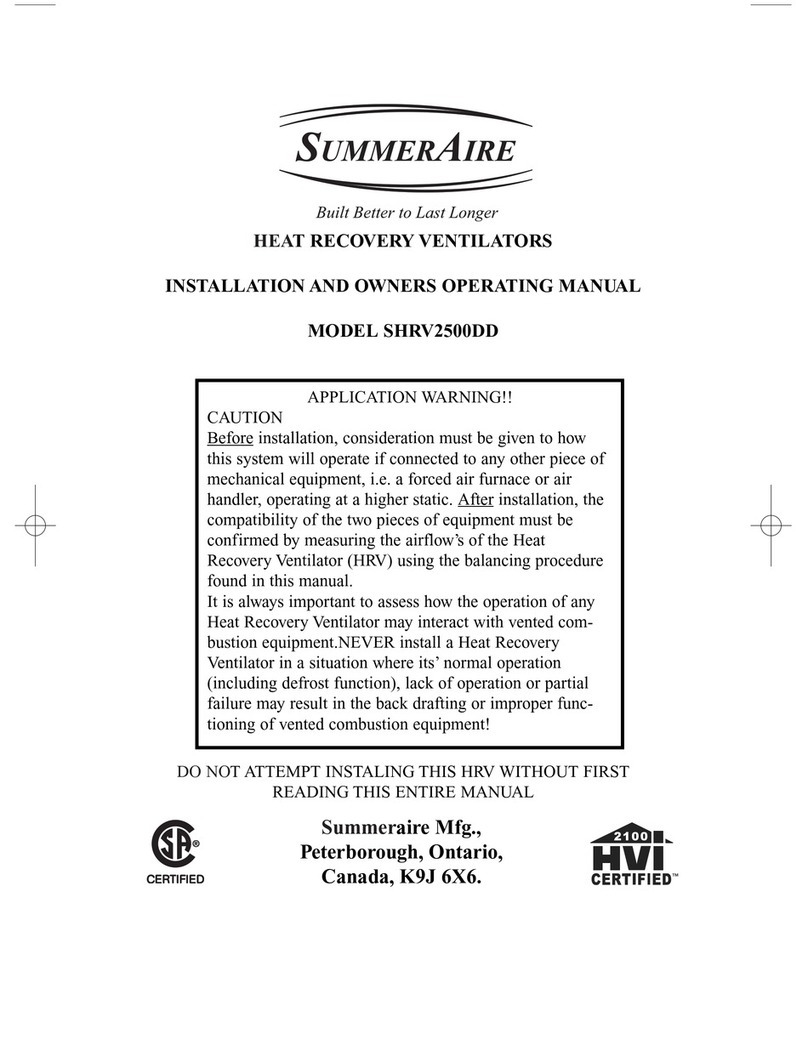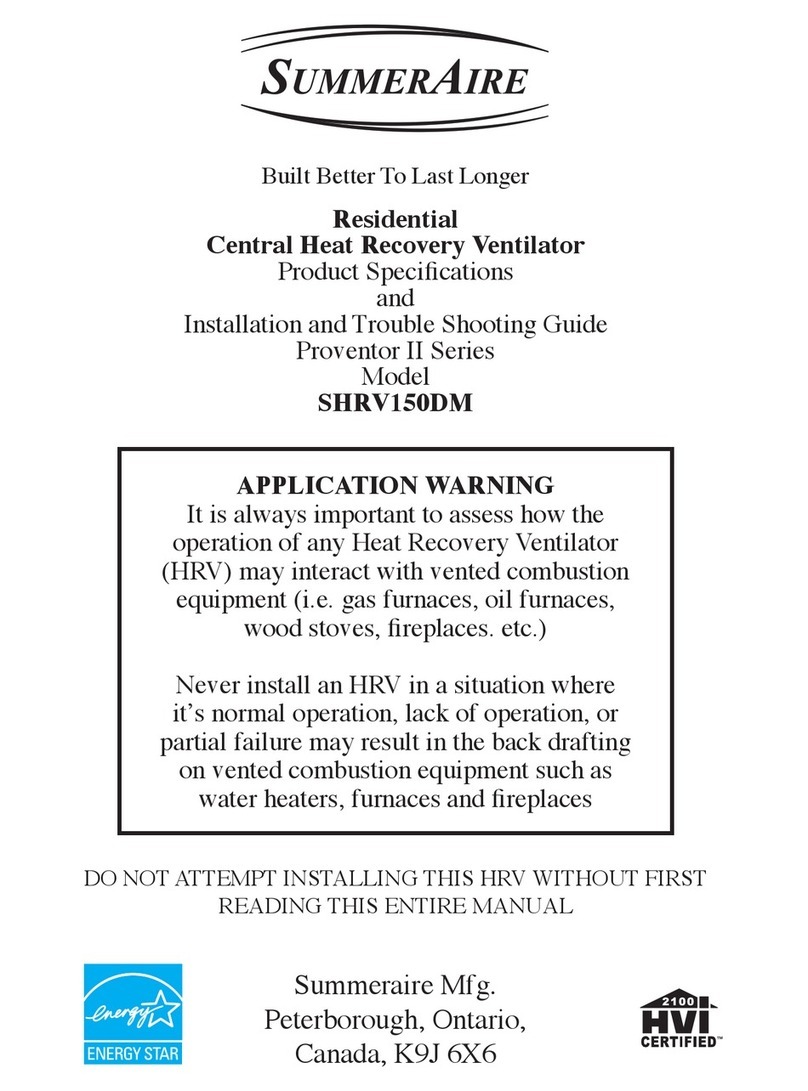
8
OPTIONAL CONTROLS
Remote Timer Touch Pad
Model -PBT
Touch pads are typically installed in any room where
20/40 or 60 minutes of high-speed ventilation may be de-
sired, i.e. bathrooms and/or kitchens. Once activated by a
momentary push, these buttons illuminate to indicate high
speed activation. If more than one touch pad is installed
in the system then all will illuminate upon activation until
the timed sequence has expired. The display LEDS on the
touch pad will illuminate to represent the time remaining.
To cancel a selection simply continue to push the select
button until it turns off. Maximum number of touch pads
per HRV is eight (8) and 2000 lineal ft of 18/2 thermostat
wire.
Wall Mount Dehumidistat
Model - SRDEH
This control is typically installed in an area of the home
where humidity may require automatic monitoring. This
could be a central location (i.e. near furnace thermostat)
or in a specic room (i.e. kitchen, laundry etc.). When
wall mount dehumidistats are used, set the HRV internal
dehumidistat to OFF. Connect to HRV using 18/2 thermo-
stat wire.
Scout Control
This standard control is detachable from the HRV. Once
removed from the HRV, only the power (ON/OFF)
remains at the HRV. By positioning the SCOUT remotely
to the HRV, you can adjust fans speeds, turn the fan off,
select AUTO/OFF, intermittent or turn the main HRV
control Off. When the HRV has been turned off using
the SCOUT, power still remains on at the HRV ON/OFF
switch, however all external controls such as touch pads
and dehumidistats will not function. Intermittent- In this
mode the ventilation fan will run at low speed for 20 min-
utes and turn off for 40 minutes. This cycle will continue
until cancelled. External devices are active.
The optional Scout installation kit is required for remote
mounting. Maximum number of Scout controls per HRV
is one (1) with up to 400 lineal ft. of 18/2 thermostat wire.





























